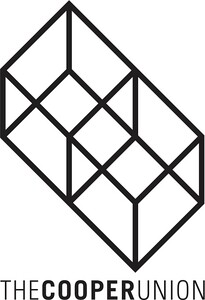Students of The Irwin S. Chanin School of Architecture at The Cooper Union
June 17, 2020
Like much of the world, the COVID-19 pandemic has kept the doors of The Cooper Union for the Advancement of Science and Art’s landmark Foundation Building, designed by architect Frederick Petersen, closed for months, and caused the traditional exhibition celebrating a year of student academic work to be cancelled. To keep the tradition alive, The Irwin S. Chanin School of Architecture moved not just the show, but the actual historical building in which the school’s classes, studio spaces, and exhibition spaces are held to an online environment. The effort to recreate the building’s architecture through technology was due, in part, to just one of the courses highlighted in the exhibition, which launches online on June 17, 2020 at 5pm ET at archeoys2020.cooper.edu.
“This year, with collaborator Greg Schleusner and with support from an Epic MegaGrant, I have been working with students to use real-time gaming technologies within the Unreal Engine to visualize and simulate space. What better way to put their research and work into practice than to model and capture our metaphorical home, the building in which our community learns, collaborates, and studies together,” says Farzin Lotfi-Jam, principal of Farzin and assistant professor adjunct in The Irwin S. Chanin School of Architecture at The Cooper Union. “This is an amazing way to inhabit the Foundation Building, especially when physical access is limited.”
The End of Year Show includes work from across all five years of undergraduate design studios, from first year foundational Architectonics through Thesis, as well as the Master of Science in Architecture program, seminars, and other courses. As users navigate the exhibition site across multiple floors of the Foundation Building, including the round elevator (an important historic building detail as the school’s founder Peter Cooper predicted the invention of the elevator, calling for architect Petersen to design a round shaft through the building where an elevator was eventually installed), student drawings, 3D renderings, and more will be on view. The virtual environment will be augmented with additional content, such as videos, animations, and slide presentations. Some of the design studio topics addressed investigations of Points, Lines, Surfaces, and Volumes; Spaces for Play; Urban Housing; and Revisiting the Scenographic City.
“Mounting this exhibition has been no small feat for our faculty and students who needed to not only curate and assemble its material, but to model the spaces of The Cooper Union as a virtual scaffolding for the work,” says Nader Tehrani, Dean of Cooper’s The Irwin S. Chanin School of Architecture. “To be finalizing this exhibition at a time when our world is confronting centuries of systemic Black racism has brought even more weight and meaning to the potential of their extraordinary work. All of our design studios considered a wide range of themes, engaging challenges of natural disaster, social struggle, environmental decadence, and problematic histories, in addition to the larger impact of infrastructures at the geographic scale—complex systems and events which we know negatively affect people of color, underrepresented minorities, those without access to education or health care, and communities suffering from economic inequality.”
Tehrani added, “In creating this virtual space, we have hoped to frame the all-important spaces of The Cooper Union as we know them, but also to inhabit them in ways that take advantage of the virtual, suspending disbelief in conventional constraints. Thus, we hope that this exhibition is a judicious and critical curatorial lens into our space of learning, demonstrating the significance of how and why we design our own environments.”
“We are venturing into a new territory of how we can mount exhibitions that completely reimagines how we can think about scale, gravity, movement, and atmosphere,” says Steven Hillyer, Director, The Irwin S. Chanin School of Architecture Archive, who is collaborating with Lotfi-Jam, the team of students he assembled, and Cooper colleagues, all of whom are making this effort possible, including the student/faculty groups working on layouts for the design studio and coursework to be presented. “The virtual world of The Cooper Union allows us to mount exhibitions in a way that we simply would not have been able to previously. I hope this environment can become another shared community space and be useful to the school in other ways moving forward.”
The project team includes Hillyer and Lotfi-Jam; students Taesha Aurora, Jesse Basset, Dylan Dewald, Andrew Hebert, Maksymilian Mamak, and Austin McInnis, and Qicheng Wu; 2018 School of Art graduate Richard Yee, and colleagues Chris Dierks, Mauricio Higuera, and Mark Rossi. The group received an enormous amount of technical support from Marget Long in Cooper Union’s IT department.
The School of Architecture plans to keep the exhibition site indefinitely, eventually migrating much of the work to its free, online Student Work Collection database, which represents over eight decades of The Cooper Union’s experimental, influential approach to architectural education. The first phase of its Student Work Collection which encompasses analog image, text, and audio records as well as born-digital media launched in November 2019.
The annual End of Year Show of The Irwin S. Chanin School of Architecture at The Cooper Union. For additional details in advance of the June 17 site launch, please visit the exhibition listing site here.


